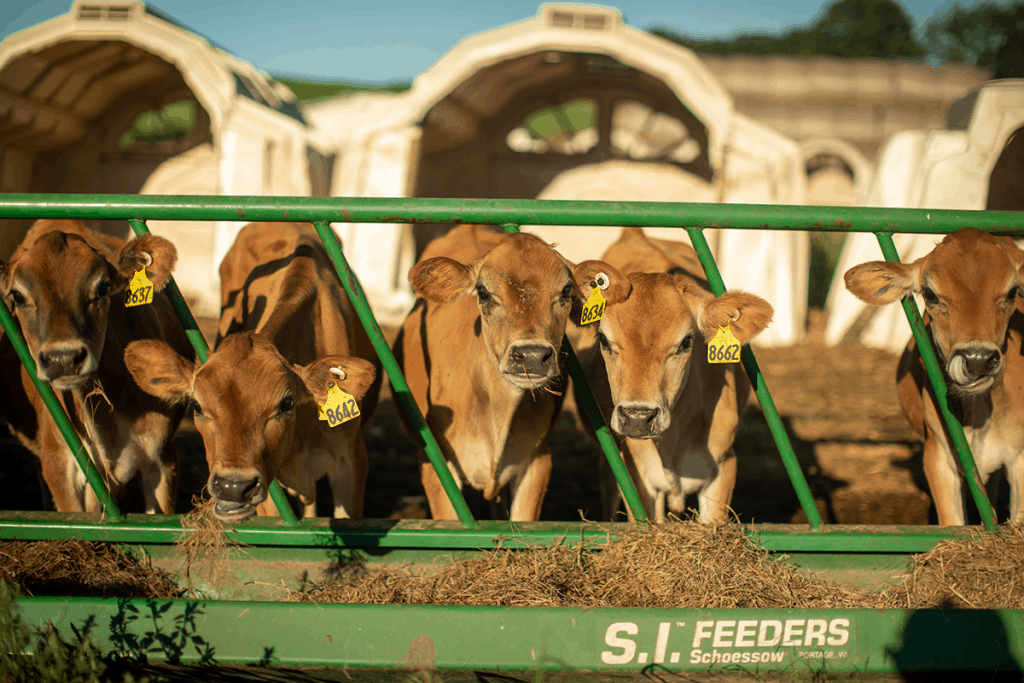Five tips to curb dairy cow feed costs
As some farmers across the country navigate drought conditions and rising dairy cow feed costs, many are looking at ways to stretch feed inventories. Small changes in your dairy farm’s feed management program can result in big savings.
Here are our top five tips to tighten up protocols, revisit the basics and get creative to ensure your feed inventories don’t sneak away this summer:
1. Evaluate heifer inventory
Evaluating heifer inventory is just as important as feed inventory management.
Ensure heifer inventory matches your farm’s future replacement needs to help manage tight feed inventories. If you’re feeding more heifers than you’ll need in the future, it likely doesn’t pencil out to keep them all when costs are high.
Review cow cull rate, heifer survival rate and the number of heifers born monthly. If your cull rate decreases, you might not need as many heifers to replace older cows. Recalculate your heifer inventory if you experience a change in heifer survival rate from birth to first calving.
Reviewing your semen use and ratio of sexed, conventional and beef semen can also help curb costs. Consider the number of heifer calves you anticipate over the next six months and if you should keep them all.
Managing heifer inventory from wet calf to springer can save money on feed and help market females at the right time.

2. Check for total mixed ration errors
While we expect our feed to make it into the mixer at the set ingredient amounts, mistakes can happen. Carefully review data from your feed management software, like FeedWatch, for mixing errors.
Review timing between total mixed ration ingredients, volume of ingredients used and ingredient order. Overfeeding an ingredient instead of returning it to the commodity bay is a nearly invisible way feed gets lost.
Most feed management software can flag when an ingredient is added too quickly after another, indicating extra was left in the loader bucket before grabbing the next ingredient.
Keeping a close eye on actual weights of each ingredient added can add up too — especially if weighbacks or refusal volume isn’t where you’d like to see it.
Mixing order matters. Add total mixed ration ingredients in the appropriate order and ensure proper mixing to avoid feed waste at the bunk from sorting.
3. Recalculate feed inventory and regularly walk it
Did sloppy spring weather rob you of feed inventory? Did you have unexpected spoilage, a big rain washout or a bad spot in the bunker?
Take frequent feed inventories and recalculate needs to determine when it’s time to make a ration change to help stretch a forage until the next crop is available.
By staying ahead of forage inventory you can make proactive changes to save on dairy cow feed costs.
4. Dig in to shrink and weighbacks
Does your fresh cow pen have the same refusal goal as your low group? Should they? Consider your goals and make sure your weights add up. If they don’t, it’s time to do some investigating.
Keep your feeder aware of cow pen moves and number changes before making a new batch of feed.
If you’re using FeedWatch as your feed management software, pen numbers will automatically update from DairyComp herd management software.

Consider target weighbacks. Keep in mind shrink isn’t just the feed that blows away. Are fresh cows’ needs being met when they’re fed to an empty bunk?
Unprocessed corn kernels in manure, excess nutrient volume beyond a cows’ needs in an unbalanced ration, and spoiled feed are all sneaky ways shrink can cost you money.
5. Explore alternative feed byproducts
Cows are some of nature’s best recyclers. Feeding dairy cows byproducts is another way to manage feed costs and contribute to a sustainable future.
Having a grasp on forage inventories to optimize inclusion rate is the best way to leverage byproducts. If forage inventories are tight, consider dialing back inclusion rates early to use fewer byproducts over a longer period rather than adjusting them quickly.
Whole cottonseed, wheat midds, soy hulls, and other byproducts can help bring stability to a ration when forages are tight.
It’s always best to plan for flexibility in product choices and secure sources.
Work with a VAS expert to evaluate more ways you can reduce dairy cow feed costs on your farm.